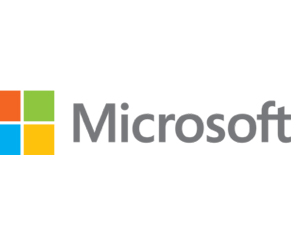How Educational Institutions Can Benefit From Full Lifecycle Device Services
As in all industries, educational institutions are being flooded with devices. Whether they belong to students, staff or faculty, all of them must be managed, and doing so can be a massive undertaking.
During the pandemic, remote and hybrid learning created new demand for devices as educators rushed to provide uninterrupted learning under unprecedented circumstances. Following the pandemic, many schools have found themselves struggling to manage these many new devices.
“A lot of schools were just buying anything they could get their hands on,” says CDW Regional Sales Manager Mike Grey. He notes that supply chain issues affected purchasing decisions during the pandemic and says that customers are now rethinking their choices. He says some buyers have the attitude of, “We really aren’t tracking what’s happening with our devices, we're not actively managing them, we're not tracking the devices through the lifecycle and we're not sure how impactful the devices have been to our students and faculty.”
Over the past year, Grey’s primary focus with customers has been the device lifecycle, from beginning to end. “How do you deploy your devices effectively? What is your strategy for end-of-life devices?” Grey says. “In a post-pandemic world, from a device standpoint, what’s important is helping them on that journey of effectively managing their devices throughout the lifecycle and figuring out how to procure and deploy the machines in the desired time frame.”
READ MORE: Learn how to optimize device management in a higher education setting.
Third-Party Device Management Begins with Procurement
For many educational institutions, the first pain point of device management is supplying students and staff with the devices they need. Michael Durand, director of sales for higher education east at CDW·G, says there’s an appetite for schools to have more responsibility for ensuring that students have access to the right technology. At the same time, schools are looking to leveraging their relationships with manufacturers and the reseller community to make sure that they’re getting access to the right devices at a good price point.
This allows the institution to create an ongoing relationship with students through their scholastic careers and beyond. CDW has been able to help schools build these relationships by creating online procurement portals, which are now being made available to students as well as alumni and staff. “In some cases, there’s an interest in opening it up to the community, to the students and parents,” Durand notes. “It’s carving out those very intricate pathways for procurement. It creates the consumer pathways for the student to log in to Amazon, but it's through the university’s CDW portal.”
According to Durand, the portal essentially acts as a digital bookstore, which makes devices more accessible and available whether students are on campus or remote. He says that online procurement portals are assisting schools by “creating those pathways to drive economy within the university and offer more control.” At the same time, he says, the schools reaps “the residual benefits of that as well through data and analytics, which is also meaningful when understanding what students are buying.” The analytics from students’ online activity can identify where their interests lie and help provide direction on purchasing decisions.
DIVE DEEPER: Find out how some schools are leveraging Google Workspace for Education.
Device Management for Short-Staffed IT Teams
When you factor in the shortage of talented IT staff many organizations face, the process of tracking, updating and managing a growing inventory of devices can require some third-party assistance.
According to CDW·G Senior Client Strategist Amanda Coleman, “There is some sort of configuration service that goes on all sorts of devices when it comes to faculty and staff standards.” Configuration services may include imaging, asset tagging, hardware integration and software integration, all of which can be provided by a third party to alleviate a school’s IT staffing issues.
When it comes to managing and updating devices, Coleman notes that several service providers offer a zero-touch device management experience, including Intune and Autopilot from Microsoft, as well as Apple’s School Manager and student services.
For some organizations, ongoing device management is best handled by a managed services provider. In other cases, it’s better to isolate the parts of the process that are best suited to being handled by a third party. Durand says that CDW can offer its expertise to help with:
- Staff shortages
- Expanding the number of devices supported
- Understanding how to operationalize and be more efficient in managing, deploying, maintaining and supporting devices
Finally, the last element of a full-lifecycle device management program is asset disposition. Many organizations haven’t adequately planned for how to dispose of devices after their usefulness has been exhausted. “What are they doing when those devices are end-of-life, and how are they getting residual value out of that?” Durand says.
Coleman says that “a lot of customers have a process in place, whether that’s recycling devices to students or faculty and staff, or using mobile devices for a loaner program, or just having a party come in and pick up old devices and properly dispose of them.”
Coleman says she frequently discusses with customers what the asset disposition process looks like. Her suggestion? “Let’s talk about how we can potentially put money back into your pocket. Let’s figure out how to do a buyback program, which is something that they’re not always aware of.”
Brought to you by:










